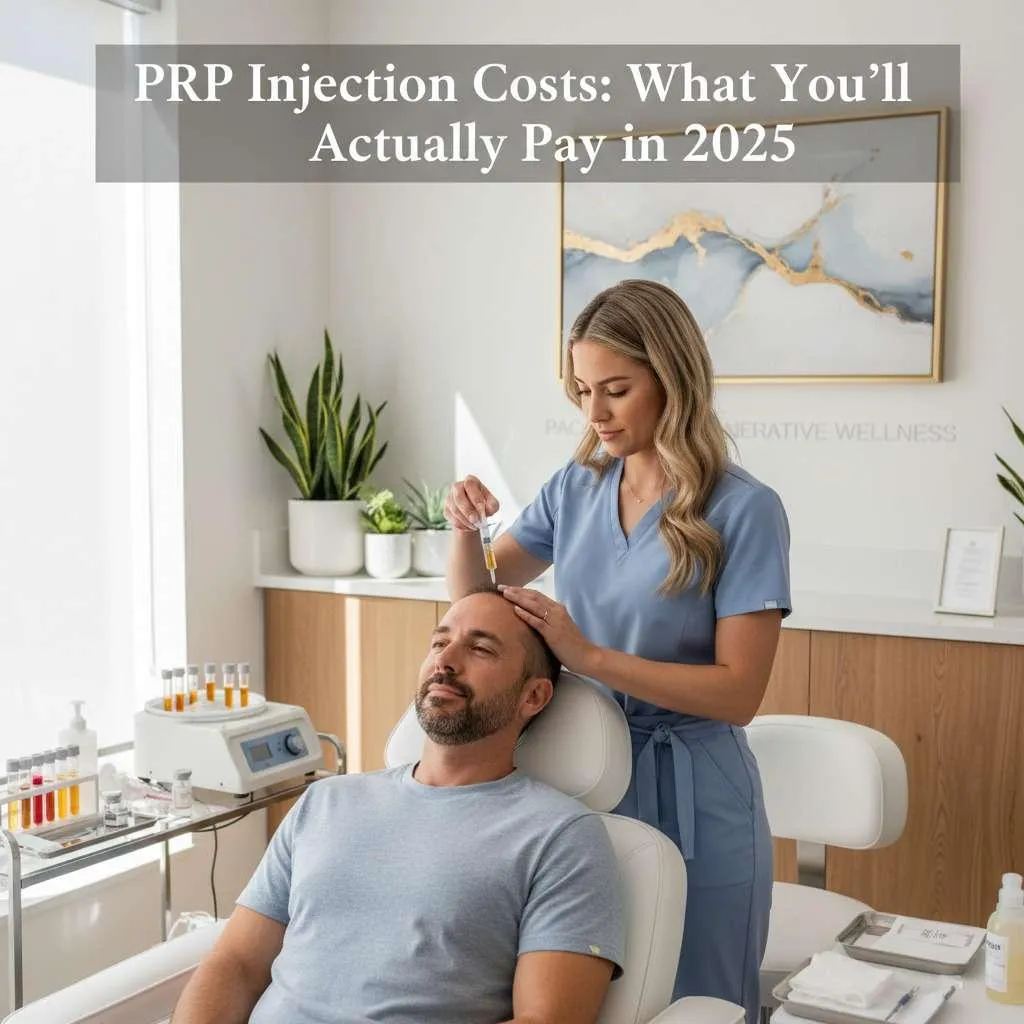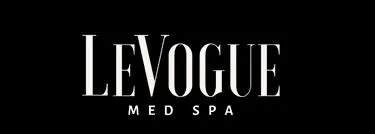
PRP Injection Pricing: What You'll Actually Pay in 2025
Platelet-Rich Plasma (PRP) therapy has gained significant traction recently. Its popularity has grown by 25% in the past year for aesthetic treatments like hair restoration and skin rejuvenation. This non-surgical method uses your blood to stimulate healing, appealing to those seeking natural, effective solutions.
If you are considering PRP Therapy in Temecula, you need clear information on costs, value, and expectations. This guide explains PRP pricing, factors that influence costs, and the long-term benefits for your beauty and wellness.
Key Takeaways
How PRP therapy works and its benefits for hair, skin, and joints.
The factors driving PRP costs.
Typical pricing for hair restoration, skin rejuvenation, and knee treatments.
Insurance coverage and financing options for PRP.
Whether PRP’s results justify its investment.
How Does PRP Therapy Deliver Value?
PRP therapy starts with a small blood draw. We spin the blood in a centrifuge to concentrate platelets and growth factors. These are injected into targeted areas to promote healing. Because it uses your own cells, the risk of allergic reaction is nearly zero.
Our med spa uses advanced centrifuges to ensure high platelet concentration. This maximizes results for aesthetic and orthopedic needs. To understand the step-by-step process of how we prepare these injections, you can read our complete PRP treatment guide.
Primary Benefits:
Hair Loss: Excels in treating androgenic alopecia.
Skin Rejuvenation: Boosts collagen to reduce fine lines (often called the Vampire Facial).
Joint Pain: Improves mobility in knees and joints.
Adults aged 30 to 50 are often ideal candidates. With minimal discomfort and quick recovery, PRP suits busy lifestyles.
What Factors Influence the Price?

Several factors shape the cost of PRP injections. Knowing these helps you plan your budget.
Provider Expertise: Our board-certified dermatologists and aesthetic injectors have specialized training. Their precision ensures better results, whether you are visiting our PRP clinic in Temecula for hair restoration or skin care.
Treatment Area: Scalp injections for hair loss differ in complexity from facial treatments or knee injections.
Equipment Quality: High-quality equipment, like medical-grade centrifuges and calcium chloride activators, ensures effective results but adds to the operational cost.
Number of Sessions: A single session starts the process, but durable results usually require a series.
PRP Pricing Breakdown
We believe in transparency. Below is the typical pricing structure for our treatments. While a single session can be effective, most patients opt for packages to save money and ensure the best outcome.
Note: Package deals, like a 4-session hair restoration plan, often reduce the per-session cost significantly.
Will Insurance Cover Your Treatment?
Aesthetic PRP treatments are rarely covered by private insurance plans like Blue Cross Blue Shield because they are considered elective. According to CMS.gov, Medicare coverage is generally limited to specific chronic wound care trials and does not extend to aesthetic or standard orthopedic PRP injections.
Most clients cover these costs out-of-pocket. However, to help with affordability, we offer financing options and monthly payment plans. It is smart to check the eligibility requirements to ensure you are cleared for treatment before discussing payment plans.
Is PRP Worth the Investment?
A single PRP session can start results, but a series offers the best outcomes. This makes PRP a valuable investment for many. Clinical trials show 70% to 90% success rates for hair restoration, with clients seeing thicker hair within 2 to 3 months.
Real Patient Experiences:
Jane: Saw 30% more hair growth after 4 sessions.
Michael: His acne scars faded, and his skin tightened after a Vampire Facial.
Recent studies found in the National Institutes of Health (NIH) database suggest that while pricing varies nationwide, the long-term efficacy of PRP for conditions like knee osteoarthritis often makes it a cost-effective alternative to surgery.
Why Choose LeVogue Med Spa?
We are the region’s fastest-growing med spa, voted #1 for client-focused care. We stand out for:
Advanced Technology: Our PRP centrifuges ensure high platelet concentration for optimal results. PRP Therapy for skin rejuvenation Temecula is tailored to meet the aesthetic demands of Temecula clients, delivering radiant, youthful skin.
Proven Expertise: With over 1,000 successful PRP treatments, our board-certified dermatologists and aesthetic injectors customize care, selecting from four PRP types (leukocyte-rich, leukocyte-poor, pure, or activated) for hair restoration, skin rejuvenation, or knee pain relief.
Client-Centric Care: PRP Therapy for skin rejuvenation Cary reflects our commitment to precision, offering Cary-area clients high-quality care adjusted for regional preferences.
Affordable Options: Financing and package deals make PRP accessible, paired with a state-of-the-art facility for a comfortable experience.
If you are unsure if this is the right path for you, learn more about what makes a good candidate for PRP.
Frequently Asked Questions
What is the average cost of a PRP injection?
In the USA, a PRP injection averages $500 to $1,200 per session. Pricing depends heavily on the provider's experience and the location.
Is one session enough?
Rarely. While one session helps, hair restoration and skin treatments typically require 3 to 6 sessions for visible, lasting results.
Does insurance cover PRP?
For aesthetic purposes, no. Some orthopedic specific cases might get partial coverage, but this is rare. We recommend planning for out-of-pocket costs.
How long do results last?
Results generally last 12 to 18 months. Maintenance sessions once a year can help you keep your results for much longer.
Conclusion
PRP injections typically cost between $500 and $1,200 per session, offering high value for hair restoration, skin rejuvenation, and joint pain relief. While the upfront cost is an investment, the natural, long-lasting results make it a preferred choice over surgery for many.
Schedule your consultation at LeVogue Med Spa today to get a personalized quote and start your journey to rejuvenation.

